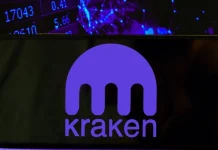
The European Union is preparing to implement very comprehensive rules for cryptocurrencies, which means that cryptocurrency firms’ business operations in the zone will no longer be the same. European Union’s MiCA regulation, released in September 2020 after a 3-year development period, will become operational in 2023. Its scope of regulation includes guidelines for issuers of stablecoins and additional licensing and other rules starting from December 2024.
The MiCA regulation gives crypto companies, like those that issue or trade cryptocurrencies and provide digital wallets, the opportunity to operate in the whole European Union after obtaining a license from any of the EU member states. This regulation allows each country to enact the EU legal provisions, appoint regulatory bodies, and grant service licenses for this service provider.
For countries with strict regulations for cryptocurrencies, such as Germany and France, the implementation of MiCA will be relatively minor. Nevertheless, some member states might be exposed to extra regulatory demands. The degree of readiness for MiCA differs among EU countries, with at least ten coming close to finalizing their national legislation.
Sophie Lesser, a partner at DLA Piper and a fintech legal expert, asserted that regulations would be likewise introduced as planned. Nevertheless, countries may be allowed to select their standards when the technical side of things is in question. This might raise the issue of how companies assume to be in line with the stipulated regulations.
The regulation of cryptocurrencies within the European Union is often incompatible. In France, the French authorities of the monetary and banking systems that enforce the compliances are responsible; meanwhile, in Croatia, the national bank and the financial regulator will be in charge. Central banks shall function as chief guardians of crypto regulatory matters in countries without institutions of financial regulators, like Slovakia and Hungary.
Countries are in different phases of the MiCA implementation process in domestic lawmaking. This entails the identification of the relevant grassroots entities to choose from and laying out whether to exercise the transitory periods mandated by the accord. One such case is Denmark, where the law is now being drafted to identify the Danish national financial supervisory authority as a responsible entity for MiCA supervision.
The duration of the grandparenting regime, which gives crypto incumbents time to adjust to the new rules, is different in some countries. The accepted maximum timeframe, 18 months, allows some countries to take advantage of the longer duration, while others, like Spain, have decided on a shorter 12 months.
The MiCA deadline is looming, and national competent authorities are preparing for a possible surge of requests once implemented. This may consist of increasing the number of employees and training them to process licenses. The aim is to protect customers and financial systems and develop the EU’s cryptocurrency industry by creating a robust regulatory framework.
The success of MiCA hinges on the willingness of all the EU member states to adjust and uphold these new regulations, striking the delicate balance between stringent supervision and the ever-changing internet cryptocurrency ecosystem.












